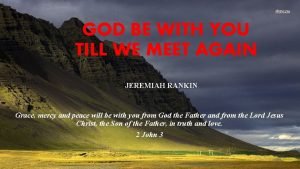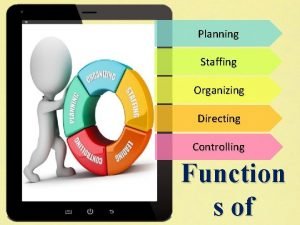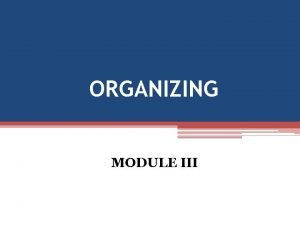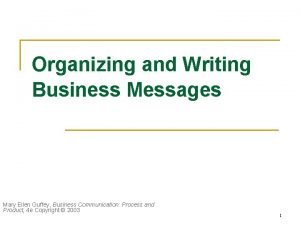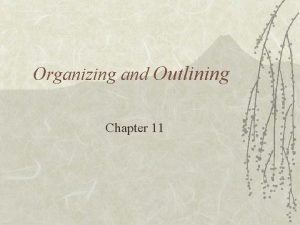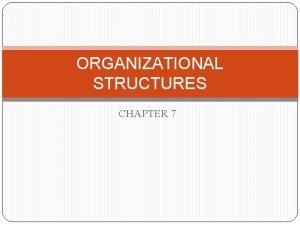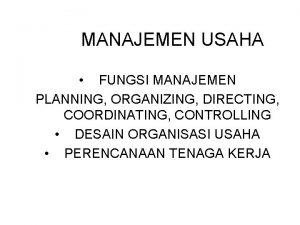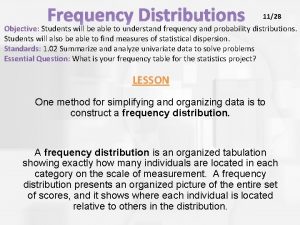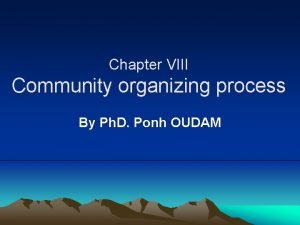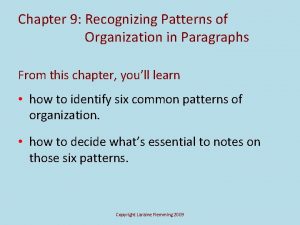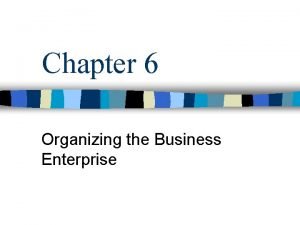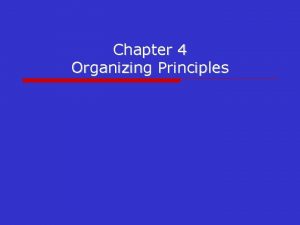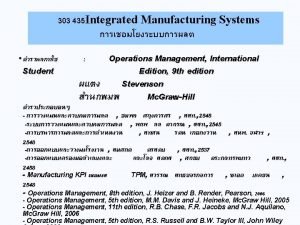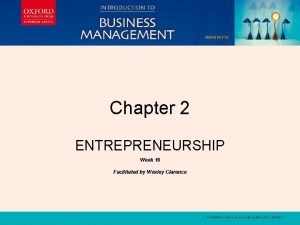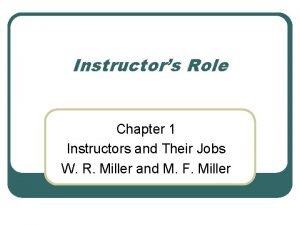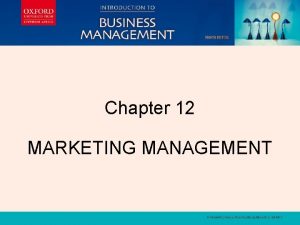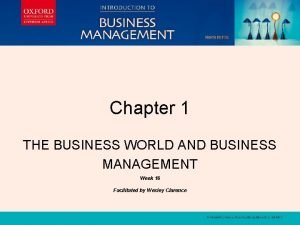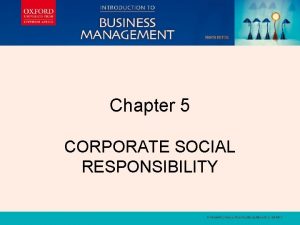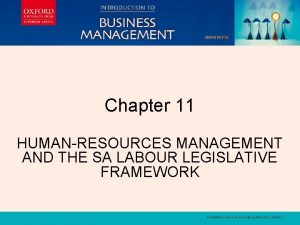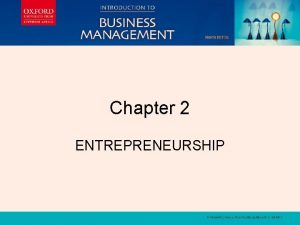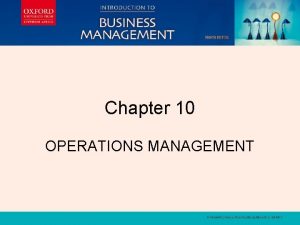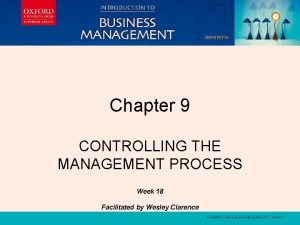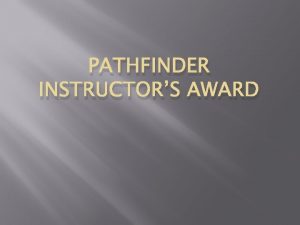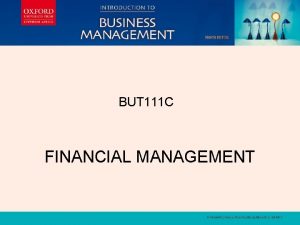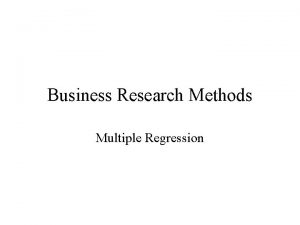Organizing to Meet Multiple Needs Instructors Guide Church






























- Slides: 30

Organizing to Meet Multiple Needs Instructor’s Guide Church Renewal Resource Evangelism Ministries USA/Canada Region Church of the Nazarene

Organizing to Meet Multiple Needs The purpose of this module is: To expand the understanding of how the church can effectively use various group sizes to meet social needs. The Objectives for this module are: • Identify the need for various group sizes. • Discuss four group sizes and how they meet social needs. • Evaluate the local church’s effectiveness in meeting social needs when focusing on spiritual development. • Develop a plan for deliberately meeting social needs.

Organizing to Meet Multiple Needs • The church is a SOCIOLOGICAL institution formed by Christ to minister spiritually. We normally consider the spiritual aspect and overlook the sociological aspect. • During our discussion today, we will talk about four group sizes that meet our social needs.

Organizing to Meet Multiple Needs • However, let me clarify at this point: 1. Just because a church is small doesn’t mean it doesn’t need small groups. 2. People like to serve the Lord TOGETHER and small groups provide the intimate and personal fellowship they desire. 3. So as we look at numbers and sizes of groups, continually think about how you can organize your church to meet the needs addressed within each group.

Organizing to Meet Multiple Needs II. FOUR SOCIAL GROUPS A. Discuss needs, relationships, typical structure, and place of meeting. 1. Cell • The cell group is designed as an intimate, coring group where disclosure of needs and disposition takes place. • Cell groups typically meet in homes and focus around prayer, Bible or topical study, or accountability.

Organizing to Meet Multiple Needs 2. Class a. A group larger than the cell group, the class is designed to provide learning in an environment of fun and fellowship. b. In the class setting, everyone knows the members’ names and recognizes when someone is absent. c. Typically this group is the Sunday school class or a special interest group.

Organizing to Meet Multiple Needs 3. Congregation a. Larger than a class, the congregation group also provides a place for learning; however, it also provides a sense of belonging or association. b. There is a sense of affiliation with the others who participate in the group. i. Everyone doesn’t know everyone else’s name and members can miss without being noticed. ii. There is more of a feeling of spectating rather than participating.

Organizing to Meet Multiple Needs 4. Celebration a. Celebration is the largest group size and provides its members with a sense of excitement and anticipation. b. Although it is larger than the congregation, the excitement fosters participation and meets the need for praise and worship.

Organizing to Meet Multiple Needs B. The relation of one group to the other can best be illustrated by drawing a large circle for the Celebration, another circle just inside the larger circle to represent the Congregation, several circles inside the Congregation circle for the Class, and smaller circles within the Class circles to represent the cells. Note: some cell groups will form outside the class structure.

Organizing to Meet Multiple Needs 3 -15 Group Size Needs Relationships Typical Structure Place of Meeting Cell Intimate sharing Close Deep Strong Home prayer groups Study groups Homes Class 15 -40 Learn Fun fellowship Everyone knows my name I’m missed when I’m absent Sunday School Class Interest Group Sunday School classroom Anywhere the group dictates Congregation 40 -120 Learn Sense of belonging Association Spectator Sunday morning service Celebration 120+ Praise Worship Prayer Participant Worshiper Any service with anticipation Fellowship Hall, restaurant Sanctuary meeting room or club house

Organizing to Meet Multiple Needs C. Here are the numbers for the four group sizes. You may have some questions about the sizes, especially celebration at 120+. 1. Remember the challenge to FOCUS on the need. 2. We’ll specifically talk about how you can encourage celebration before you reach that 120+ mark in just a moment. For now let’s move back to the cell.

Organizing to Meet Multiple Needs D. As you can imagine, Sunday School is an excellent structure for DEVELOPING the class and cell groups. 1. We sometimes think Sunday School is merely in a classroom where teaching takes place. 2. The most important function of the Sunday School is the sociological aspect which is normally overlooked.

Organizing to Meet Multiple Needs E. Here are two examples of how important the social factor can be: 1. Los Gatos Church experienced three years of losses when they did away with the traditional Sunday School class in favor of the elective approach. When they developed fellowship care rings (cell groups) outside of the Sunday School organization they began to grow again. 2. In another church, men in a Sunday School class were known to draw notes to their wives on the bottom of their shoes during the lecture and the women cleaned out their purses, but the class continued to grow. Why? It wasn’t because of the learning!

Organizing to Meet Multiple Needs F. Cell groups can form from within the Sunday School Class 1. Cell and class groups SERVE several purposes: a. Entry points for new people b. OUTREACH avenues c. Maintenance ministry d. Indoctrination e. EXAMPLING/discipline f. Instruction g. Serving units

Organizing to Meet Multiple Needs 2. Cell groups can be started as needed or as the occasion arises to serve the same purpose listed. G. A “class” includes up to 40 people. 1. One-fourth of all Protestant congregations in North America average less than 35. 2. Most choirs, even in churches of 500 to 1500, have only 40 singers (Schaller, 1983).

Organizing to Meet Multiple Needs H. There seems to be a small group ceiling at 40. Let’s take a look at some thoughts from Dr. Lyle Schaller about why many groups do not grow beyond 40 and how we can avoid becoming stagnant at 40.

Organizing to Meet Multiple Needs III. Why Churches Don’t Grow Beyond 40 Adapted from “The Rule of Forty, ” Lyle E. Schaller, the Christian Century Foundation, 1983. A. Dynamics of Group Size 1. The church is a VOLUNTARY organization. 2. People attach themselves to a voluntary organization because of relationships. 1. Forty people in a group TAXES the quality of relationships. 2. Most youth groups, men’s fellowships, and women’s organizations rarely exceed 40.

Organizing to Meet Multiple Needs B. The Small Group (3 -15) 1. Small groups (cells) are the most effective in terms of in-depth relationships and productivity in tasks. 2. Larger groups (classes) can provide the same function, but with diminishing returns. a. Most youth groups, prayer fellowships, church boards, choirs, or mission societies heave 15 or fewer members. b. FIFTEEN people are about the most any of us can keep track of.

Organizing to Meet Multiple Needs c. When the group exceeds 15, someone can be absent and go UNNOTICED. d. Most people will not feel comfortable CONTRIBUTING to discussion when there are more than 15 people present.

Organizing to Meet Multiple Needs C. The Large Group (40+) 1. When a group gets close to 40, relationships with people cease to be the reason to get together. a. The sense of cohesion or unity is lost because everyone does not know each other. b. With a group this size not everyone can be EXPECTED to develop a strong attachment to the group or to each other.

Organizing to Meet Multiple Needs 2. Discussion and presentation styles must CHANGE when the group nears forty. a. Involving the participants in interactive discussion where everyone feels comfortable to SHARE is virtually impossible. b. Small group interactions are even difficult to facilitate with significantly

Organizing to Meet Multiple Needs D. Evidences of the 40 Barrier Forty is a barrier to continued growth when: a. b. c. d. Absenteeism or irregular attendance INCREASES; Small group principles cease to be EFFECTIVE; People become discontent and DROP OUT; Morale DECLINES.

Organizing to Meet Multiple Needs E. Breaking the 40 Barrier 1. When your church, Sunday school class, choir, or other groups reach 40, implement the following techniques to continue their growth: a. Develop multiple SMALL groups, i. e. in a Sunday School class, discussion groups or prayer cells can be encouraged inside or outside the class.

Organizing to Meet Multiple Needs b. Move away from small group TECHNIQUES. c. SUBSTITUTE large group techniques, for example, become platform centered. d. Turn the group’s attention to a leader or a task and away from RELATIONSHIPS.

Organizing to Meet Multiple Needs 2. While the group is transitioning through the 40 barrier, ask for a high COMMITMENT from each person until the changes are complete. 3. Do advanced PLANNING, for this is more helpful when holding large groups together.

Organizing to Meet Multiple Needs IV. Celebration A. The social needs for celebration do not wait until the group reaches 120+. Yes, it will be easier with more people, but some things can be done right now. B. Celebration meets a need for praise and worship in an environment of participation and excitement.

Organizing to Meet Multiple Needs 1. Celebration is directly related to the size of the facilities. 2. When the elements of celebration are present (preparation, anticipation, and excitement of those leading), celebration can take place when the facilities are 50%-55% full.

Organizing to Meet Multiple Needs a. If your facility seats 150 people, then you can provide celebration with 75 or more people. b. But you may be several people away from having 75 people. You do not have to wait until you reach 75 in attendance to celebrate? Certainly not! c. Be creative in getting the 50 people you have to sit together. For example, put up fewer chairs or make part of the space an extra Sunday School class room. This will bring people together resulting in the “herd experience. ”

Organizing to Meet Multiple Needs Small Group Exercise Work with the team members from your church to complete the questions. You will have 20 minutes to complete the questions. • Identify what groups are currently in place to meet the four different needs outlined in the lecture (cell, class, congregation, and celebration). • Also at what level they are meeting the need for celebration?

Organizing to Meet Multiple Needs Action Planning/Reporting Let’s take about 15 minutes to discuss how you will ensure your church is organized to meet multiple social needs. In your material you have an Action Planning/Reporting page with your homework assignment. Identify areas where your church can implement or enhance groups so they are meeting multiple needs. Identify with whom you need to share this information.
 God be with you until we meet again
God be with you until we meet again Edgar dale cone of experience examples
Edgar dale cone of experience examples How does food help meet physical needs
How does food help meet physical needs Primary needs and secondary needs
Primary needs and secondary needs Satisfaction
Satisfaction Henry murray theory
Henry murray theory Strategic gender needs and practical gender needs
Strategic gender needs and practical gender needs Target needs and learning needs in esp
Target needs and learning needs in esp Multiple baseline vs multiple probe design
Multiple baseline vs multiple probe design Multiple instruction multiple data
Multiple instruction multiple data Work portfolio examples
Work portfolio examples Staffing and directing
Staffing and directing Organizing committee structure for an event
Organizing committee structure for an event Strategy implementation organizing for action
Strategy implementation organizing for action Planning organising staffing directing controlling
Planning organising staffing directing controlling Marzano element 15
Marzano element 15 Work specialization
Work specialization Organizing and drafting business messages
Organizing and drafting business messages Organizing an outline
Organizing an outline Organizing in management
Organizing in management Fungsi manajemen coordinating
Fungsi manajemen coordinating Organizing data in a traditional file environment
Organizing data in a traditional file environment Who are managers?
Who are managers? Organizing data using frequency distribution
Organizing data using frequency distribution Register and signaling vocabulary
Register and signaling vocabulary Core group formation in community organizing
Core group formation in community organizing Organizing paragraphs using the different patterns
Organizing paragraphs using the different patterns Organizing the periodic table
Organizing the periodic table Organizational structuring
Organizational structuring Group 8 elements
Group 8 elements Organizing principles
Organizing principles
